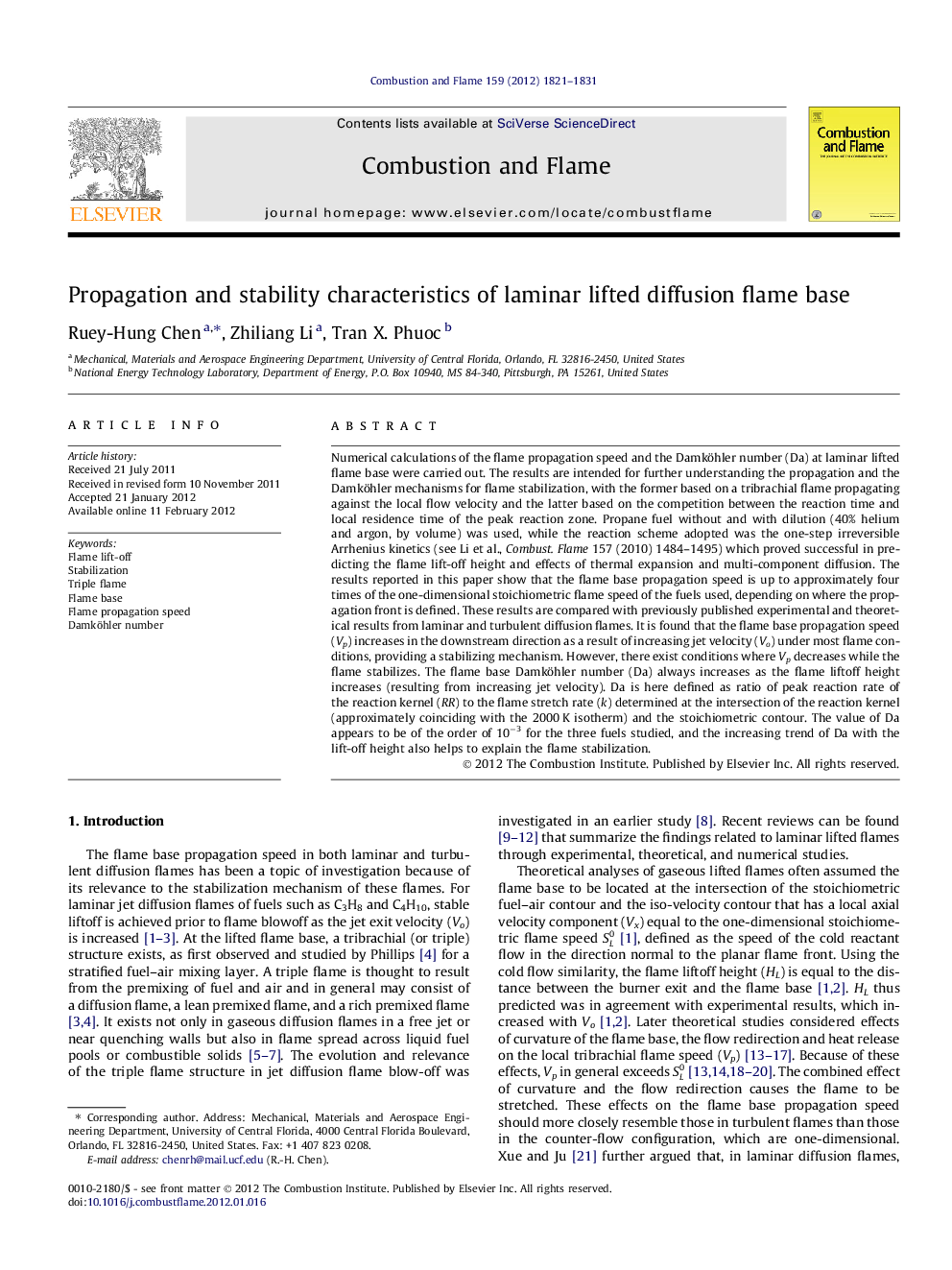| Article ID | Journal | Published Year | Pages | File Type |
|---|---|---|---|---|
| 169801 | Combustion and Flame | 2012 | 11 Pages |
Numerical calculations of the flame propagation speed and the Damköhler number (Da) at laminar lifted flame base were carried out. The results are intended for further understanding the propagation and the Damköhler mechanisms for flame stabilization, with the former based on a tribrachial flame propagating against the local flow velocity and the latter based on the competition between the reaction time and local residence time of the peak reaction zone. Propane fuel without and with dilution (40% helium and argon, by volume) was used, while the reaction scheme adopted was the one-step irreversible Arrhenius kinetics (see Li et al., Combust. Flame 157 (2010) 1484–1495) which proved successful in predicting the flame lift-off height and effects of thermal expansion and multi-component diffusion. The results reported in this paper show that the flame base propagation speed is up to approximately four times of the one-dimensional stoichiometric flame speed of the fuels used, depending on where the propagation front is defined. These results are compared with previously published experimental and theoretical results from laminar and turbulent diffusion flames. It is found that the flame base propagation speed (Vp) increases in the downstream direction as a result of increasing jet velocity (Vo) under most flame conditions, providing a stabilizing mechanism. However, there exist conditions where Vp decreases while the flame stabilizes. The flame base Damköhler number (Da) always increases as the flame liftoff height increases (resulting from increasing jet velocity). Da is here defined as ratio of peak reaction rate of the reaction kernel (RR) to the flame stretch rate (k) determined at the intersection of the reaction kernel (approximately coinciding with the 2000 K isotherm) and the stoichiometric contour. The value of Da appears to be of the order of 10−3 for the three fuels studied, and the increasing trend of Da with the lift-off height also helps to explain the flame stabilization.
